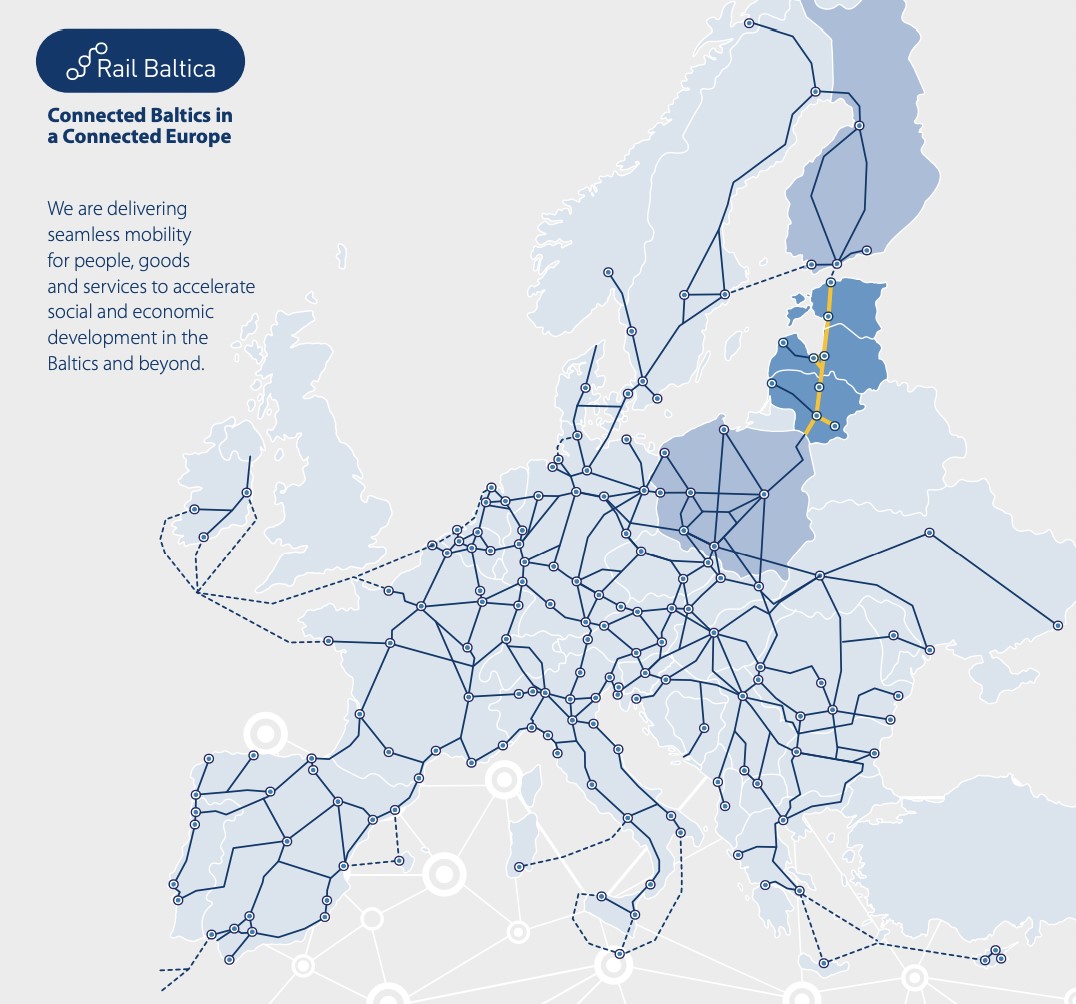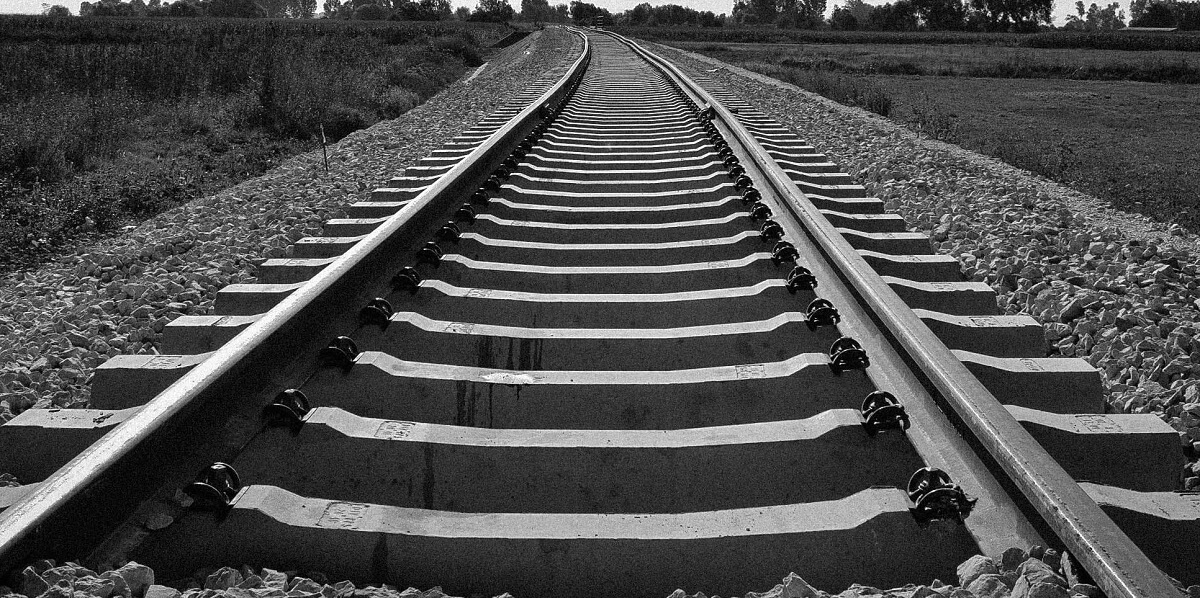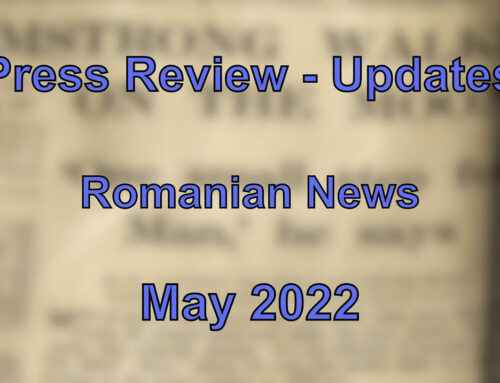Rail Baltica is the largest infrastructure project the Baltic region has seen in a couple of centuries. The goal of Rail Baltica is to integrate the Baltic States into the network of European rails as it will stretch 870 kms connecting Tallinn, Pärnu, Rīga, Panevėžys and Kaunas to the Lithuanian-Polish border with a connection in Vilnius. By bringing the passengers to Warsaw, the Rail Baltica enables a realm of possibilities for the Baltic region. It is expected to start operating by 2030.
This is the first top speed greenfield train in Europe with maximum design speed of 249 km/h for passenger trains and 120 km/h for freight trains. The Rail Baltics will be powered by electricity, producing less noise and vibration.
The project is significant beyond the Baltic region as its EU first large infrastructure project towards a “Rail Renaissance” – both a sustainable and economy-boosting transition to the climate neutral goal of 2050.[1]

The planes produce six times more emission than a train on average. Rail is the cleanest means of transportation and is paramount to the EU’s green plans, as well as to a new emerging European identity as more and more people take on Interrail each summer. Rail sector in Europe employs more than 2.3 million people, creating a gross value added of 143 billion euros, of which 65 billion is created by the direct train sector – a number that outshines the air transportation figures by far. A strengthened and affordable rail network connects long-distance destinations with local services, which is beneficial for both united European spirit and life in smaller towns, former industrial areas and rural regions. The creation of the workforce by this project is specifically significant in the region, where unemployment remains persistently high around 8-12 percent range.
The geography of the Baltic states leaves them somewhat isolated from continental Europe. The Baltic states have been EU members since 2004. However, the logistics remain to be orientated east-west – a legacy of the Soviet era. There is only one highway that goes north-south, the Warsaw-Tallinn route. This has an impact beyond the economic sphere, it is also a political matter. There is less opportunity for travelling and supra-state cultural, social and political exchange, which is crucial for the transitioning states, such as the Baltics. This is where the Rail Baltica steps in.
Historically, all Russian Empire railway networks ran on a single-track system and 1520 mm gauge, as opposed to the narrower 1435 European gauge and usual multiple-track lines. Single-track system is cheaper but it limits the bidirectional traffic flows, requiring more meticulous scheduling, slowing the process and increasing the time of the train movement. Rail Baltica is a double-track system railway with 1435 mm rail gauge.
Currently, it is impossible to take a direct train from Tallinn to Vilnius and overall transportation between the Baltic states involves more than one transfer. Most travellers and most of the freight transport resort to roads. Ninety percent of all the freight transport coming to the Baltic states from Lithuania travels by road- a significant difference with the rest of Europe. Rail shipping has a lower cost-per-ton-mobile than truck shipping, which currently dominates the Baltics. Rail Baltica will lower the transportation cost of the consumer goods coming to the region. An appearance of the well-connected transport system certainly is an advantage as the Baltic states continue their foreign investment quests.
Rail Baltica marks an important event for the Baltic region. It is the last nail in the European integration coffin. In light of the Russian invasion of Ukraine, the project is even more significant as it signals not only symbolic breaking away with the Russian past but also quite literal with the narrow gauge. So, make sure, to free up your calendar in summer of 2030, the Baltic Sea will appeal to beach lovers, hikers and experiences campers.
Source:
[1] Taken from Rail Baltica brochure at https://www.railbaltica.org/wp-content/uploads/2022/11/RB-TEN_T-broschure_210x210mm_EN_Preview.pdf




